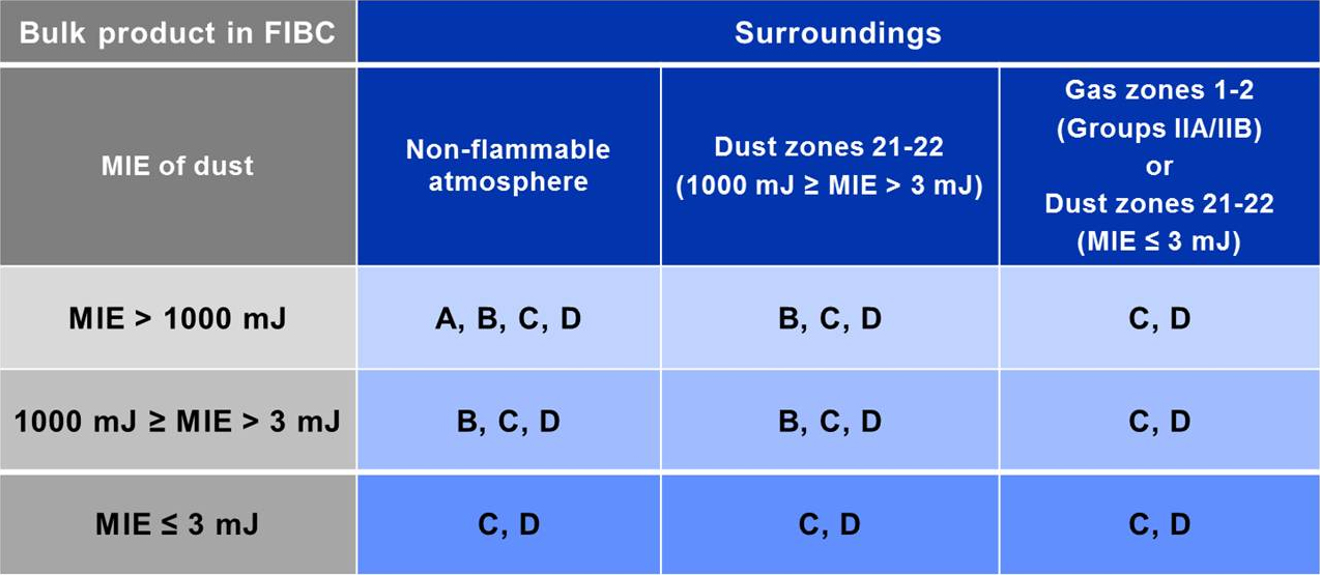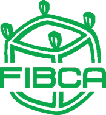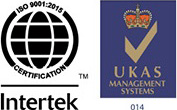FIBC Classification Types
FIBC CLASSIFICATION TYPE A, B, C, D
FIBC are classified according to one of four types. The types are defined by the construction of the bulk bag, the nature of their intended operation and associated performance requirements. The table below identifies which type of FIBC is appropriate depending on the sensitivity to ignition of the product being packaged and of the surrounding atmosphere. The sensitivity to ignition of the product being packaged, i.e. the bulk product, is defined by its minimum ignition energy (MIE). Surroundings are classified in increasing sensitivity to ignition by electrostatic discharges as non-flammable, explosive dust atmosphere or explosive gas or vapour.
HAZARD ZONES WHERE DIFFERENT TYPES OF FIBC CAN BE USED

Type A FIBC are made from plain polypropylene or other non-conductive material. Static electricity is generated as products move over the inside surface of FIBC when they are filled or emptied. As there is no static protection provided by Type A FIBC, it is essential that they are not used to store or transport combustible materials or used in flammable or combustible environments.
Type B FIBC are similar to Type A FIBC in that they are made from plain polypropylene or other non-conductive material. And like Type A FIBC, Type B FIBC do not have any mechanism for dissipating static electricity. The difference is that Type B bulk bags are made from materials that have a low breakdown voltage to prevent the occurrence of highly energetic, and dangerous propagating brush discharges (PBD). Although Type B FIBC can prevent PBD, they cannot be considered antistatic FIBC because they do not dissipate electrostatic charge and so normal brush discharges can still occur, which can ignite flammable solvent vapours.
Type C FIBC are conductive FIBC. Originally they were made from entirely conductive materials. Today, groundable Type C FIBC are more commonly made from non-conductive polypropylene interwoven with conducting yarns, normally in a grid pattern. The interconnection of conductive yarns and the connection to ground or earth are critical to the safe use of Type C FIBC. As with any manual operation, ensuring interconnection and grounding of Type C FIBC is subject to human error.
Type D FIBC are made from static protective fabric designed to safely prevent the occurrence of incendiary sparks, brush discharges and propagating brush discharges, without the need for a connection from the bulk bag to ground or earth. As CROHMIQ Type D FIBC protect against incendiary sparks, brush discharges and propagating brush discharges, CROHMIQ can be used safely to package combustible products and for handling products in combustible and flammable environments.




